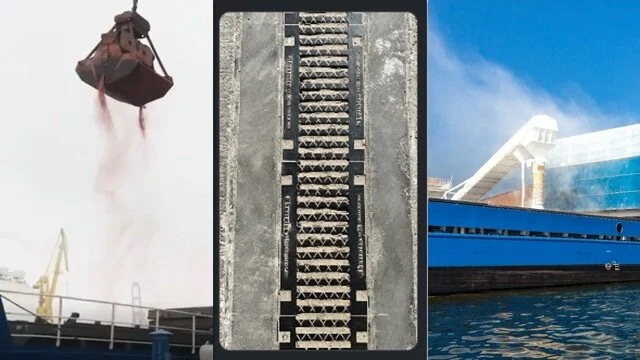Tackling nutrient leakage from ports: three pathways of dry bulk pollution
Spillage, runoff and dust emissions, common sources of pollution in Dry Bulk ports.
Did you know that there are three main ways in which dry bulk cargo can escape into the environment, including the Baltic Sea, and contribute to its eutrophication?
• Spillage during unloading - bulk materials such as fertilizers, grains, animal feed, and other biomass can spill directly into port waters through leaking or overfilled grabs during loading and unloading operations;
• Runoff from quays - materials that fall onto the quay surface can easily enter stormwater drains and be washed into the sea if not cleaned up in time;
• Dust emissions - dust from bulk handling is a serious problem – not only for the environment, but also for the health of port workers and the economic efficiency.
Through the Dry Bulk project, Race For The Baltic is working with port industry experts to address all these pathways and to co-develop practical, scalable solutions for cleaner and more sustainable port operations.
Over the past quarter, our Business Manager, Małgorzata Żochowska, visited the Szczecin–Świnoujście Port Authority and six dry bulk terminals located there, as well as the Port of Kołobrzeg Authority. Beyond on-site exchanges, Małgorzata also held seven meetings with technology companies offering solutions across all three areas - from spillage prevention and stormwater management to dust suppression systems.
The coming quarter will focus on selecting the most promising technologies and preparing for the pilot phase – a key step towards reducing nutrient leakage from port activities into the Baltic Sea.

